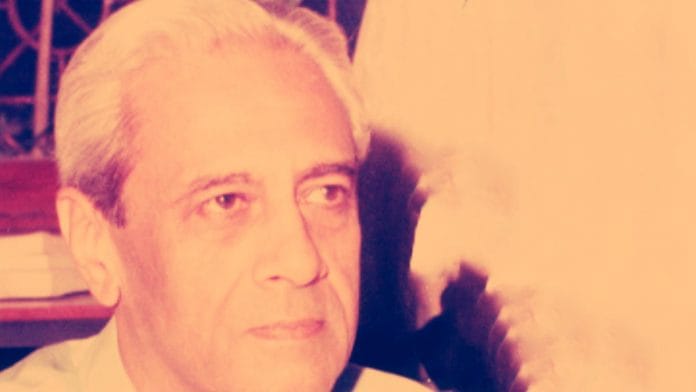ThePrint takes a look at the life of the space pioneer after whom the Sriharikota launch centre was renamed in 2002.
Mathematician and aeronautics engineer Satish Dhawan, regarded as the ‘father of experimental fluid dynamics in India’ for his research on the subject, is most well known in the country for leading India’s space programme in the 1970s to tremendous success.
Dhawan’s work in aeronautical science and space technology created new milestones in the discipline, for which he was awarded India’s second-highest civilian honour, the Padma Vibhushan, in 1981.
ThePrint takes a look at the life and career of the Indian pioneer after whom the Sriharikota launch centre in Andhra Pradesh was renamed in 2002.
Early life
Dhawan was born on 25 September 1920 in Srinagar to a British-era civil servant who later retired as a resettlement commissioner in the Government of India.
The science wizard completed his graduation from Punjab University (Lahore, undivided India) with a combination of degrees that straddled the divide between science and technology, and humanities. Apart from a bachelor’s degree in mathematics and physics, he also pursued a master’s in English literature.
After completing BE in mechanical engineering from Punjab University, he obtained an MS in aeronautical engineering from the University of Minnesota in the US. He then pursued a PhD in aeronautics and mathematics from the prestigious California Institute of Technology, US.
He later married Nalini Dhawan, whom he met by chance.
Also read: What Indian scientists achieved in 2018 beyond ISRO and its rocket launches
Work at ISRO
Dhawan joined the Indian Institute of Science, Bangalore (now Bengaluru) in 1951 and became its director 11 years later to lead India’s space programme.
He succeeded Vikram Sarabhai as the chairman of the Indian Space Research Organisation (ISRO) in 1972. He joined ISRO at a crucial juncture where he had to put together Sarabhai’s space programme and give it a concrete structure.
At the time, Dhawan led ISRO’s first major project, the Aryabhatta — it was India’s chance to prove that it could build a space programme of its own.
Dhawan’s dream was to make India’s space programme and communications technology relevant to its society. He also wanted the technological advancements to become accessible to the last point man in the hierarchy of society.
His efforts resulted in operational systems like the telecommunications satellite INSAT, the Indian Remote Sensing (ISR) satellite as well as the Polar Satellite Launch Vehicle (PSLV).
Apart from his work on India’s space programme, he also made significant efforts in the field of boundary layer research.
As a keen observer of birds, he also painstakingly collected their photographs in flight, forming an excellent contribution to the field of aeronautics.
A family man
Despite his busy schedule, Dhawan was a family man.
“Sundays were sacred. He made sure he spent time with us. He was very good at organising activities for us to do,” his daughter Jyotsna recounted in an interview.
“We felt he was always there for us. And he was always interested in what we were up to. He was never prescriptive. He never expected specific things from us. It was great.”
At the age of 81, Dhawan died on 3 January 2002.
Also read: Jargon-less research is latest ISRO tool to bring the universe to our living rooms






